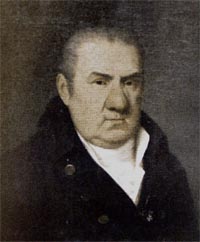SAINTS, MYSTICS AND VILLAINS OF PETERSBURG
MYSTICAL PETERSBURG
CITY LEGENDS
Giacomo Quarenghi

Every morning going to Smolny institute which was under construction at that time, Giacomo Quarenghi stopped opposite to a front entrance of Smolny cathedral, turned to it the face, took off a cap and, turning a head to domes of the cathedral, exclaimed: "Here it is a temple!"
Having executed this ritual, he slowly passed by.
In second half of XVIII-th century in the Petersburg architecture to change of baroque with its cult of decorative effect and plastic refinement comes classicism with ideas of reserved antique nobleness and greatness of forms, cleanliness and functional clearness of facades.
During such transitive epoch the relation between supporters of opposite directions in art became aggravated to degree of personal hostility. As change of styles dramatically affected destinies of architects and their creations which were often reconstructed to please to a fashion.
In many respects thanks to it Petersburg is perceived as a classical city, despite the prevailing majority of other schools in it buildings, styles and directions.
And its best ensembles, as a rule, - a result of creative coexistence of various architects.
Only in formation of such integral ensemble as Palace Square, five architects participated - Rastrelli, Rossi, Zaharov, Bryullov and Monferran, which art predilections rather dispersed both in time, and in space.
Giacomo Quarenghi (1744-1817) by whom only in Petersburg and its vicinities it has been constructed about thirty buildings was the architect who has brought the considerable contribution to creation of this kind tradition.
And if ritual of removal of a hat is only a legend it is possible to lead an actual example of the valid relation of Quarenghi to the leading architect of the Petersburg baroque - Rastrelli.
Planning Smolnyj institute, Quarenghi has placed it on some metres behind a line of facades of Smolnogo of a monastery, as though conceding superiority to the great predecessor.
Source: Three centuries of St.Petersburg: Encyclopaedia